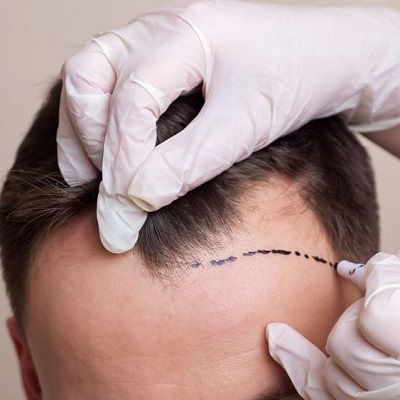Introduction
Hair loss is a common concern affecting millions globally, impacting self-esteem and overall quality of life. With various treatments available, ranging from non-invasive solutions to surgical options, choosing the right approach can be challenging. Hair transplants, in particular, stand out as a popular and effective method for restoring hair. This article provides a detailed comparison of hair transplants with other common hair loss treatments, exploring their processes, benefits, and characteristics to help you make an informed decision.

Hair Transplants
Process
Hair transplants involve relocating hair follicles from one part of the body, typically the back or sides of the scalp (known as the donor area), to the thinning or balding areas (the recipient site). There are two main techniques:
- Follicular Unit Transplantation (FUT): Also known as strip harvesting, FUT involves removing a strip of scalp from the donor area, dissecting it into individual follicular units, and transplanting these units to the recipient site.
- Follicular Unit Extraction (FUE): This method involves extracting individual hair follicles directly from the donor area using a specialized punch tool and transplanting them to the recipient site.
Benefits
- Natural Results: Hair transplants generally yield natural-looking results as the transplanted hair grows in its natural growth cycle.
- Permanent Solution: The transplanted hair follicles are resistant to the hormone that causes hair loss, leading to long-lasting results.
- Minimal Maintenance: Once the transplanted hair establishes itself, it requires minimal ongoing maintenance compared to other treatments.
Characteristics
- Surgical Procedure: Hair transplants are invasive, requiring surgery and typically a recovery period.
- Cost: They tend to be more expensive than non-surgical treatments, with costs varying based on the technique, extent of hair loss, and geographic location.
- Recovery Time: Post-surgery recovery can involve some discomfort, swelling, and redness, though most people can return to normal activities within a week or two.
Non-Surgical Hair Loss Treatments
Medications
- Minoxidil (Rogaine): Available over-the-counter, minoxidil is a topical treatment that stimulates hair follicles and promotes hair growth. It's suitable for both men and women and can help with early stages of hair loss.
- Finasteride (Propecia): This prescription medication works by inhibiting the enzyme responsible for converting testosterone to dihydrotestosterone (DHT), a hormone linked to hair loss. It's typically used for male pattern baldness.
Process
- Minoxidil: Applied directly to the scalp, typically twice daily. It may take several months to see visible results.
- Finasteride: Taken orally in pill form, usually once daily. It may take a few months to observe improvement.
Benefits
- Accessibility: Both treatments are more accessible and less invasive than hair transplants.
- Cost: Generally less expensive than hair transplants.
- Effectiveness: Effective in preventing further hair loss and, in some cases, promoting new hair growth, especially when used early in the hair loss process.
Characteristics
- Maintenance: Requires ongoing use to maintain results; discontinuation can lead to hair loss resuming.
- Side Effects: May include scalp irritation with minoxidil and sexual side effects with finasteride.
Non-Invasive Hair Loss Treatments
Laser Therapy
Laser therapy involves using low-level lasers to stimulate hair follicles and improve blood circulation to the scalp. It is often used in conjunction with other treatments to enhance their effectiveness.
Process
- Treatment Sessions: Typically involves sessions at a clinic or at home with a laser device, often lasting about 20-30 minutes per session.
- Frequency: Usually recommended 2-3 times per week for several months to see noticeable results.
Benefits
- Non-Invasive: No surgery or medication involved, making it a low-risk option.
- Stimulates Hair Growth: Can be effective in promoting hair growth and increasing hair density.
Characteristics
- Cost: Moderate to high cost depending on the device or clinic.
- Time Commitment: Requires regular sessions over an extended period to achieve and maintain results.
Platelet-Rich Plasma (PRP) Therapy
PRP therapy involves injecting a concentration of platelets derived from the patient’s own blood into the scalp to promote hair growth.
Process
- Preparation: Blood is drawn from the patient, processed to concentrate the platelets, and then injected into the scalp.
- Sessions: Typically requires a series of treatments spaced several weeks apart.
Benefits
- Autologous Treatment: Uses the patient's own blood, minimizing the risk of allergic reactions.
- Natural Results: Can stimulate hair growth and improve hair thickness.
Characteristics
- Cost: Generally lower than hair transplants but can vary based on location and provider.
- Maintenance: May require periodic treatments for sustained results.
Conclusion
Choosing the right hair loss treatment depends on various factors, including the extent of hair loss, budget, and personal preferences. Hair transplants offer a permanent solution with natural results but involve surgical procedures and higher costs. Non-surgical treatments like medications, laser therapy, and PRP therapy provide less invasive options, each with its own benefits and limitations. Understanding the differences among these treatments can help you make an informed decision tailored to your specific needs and goals.
